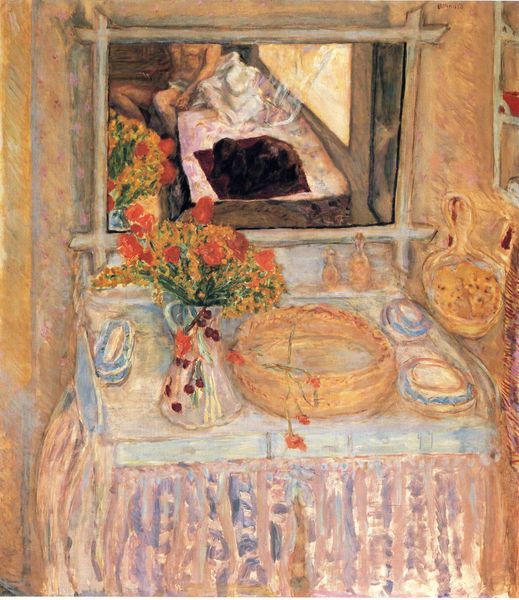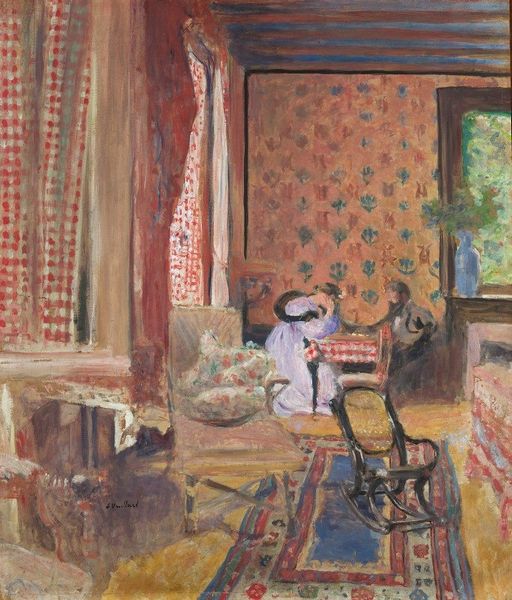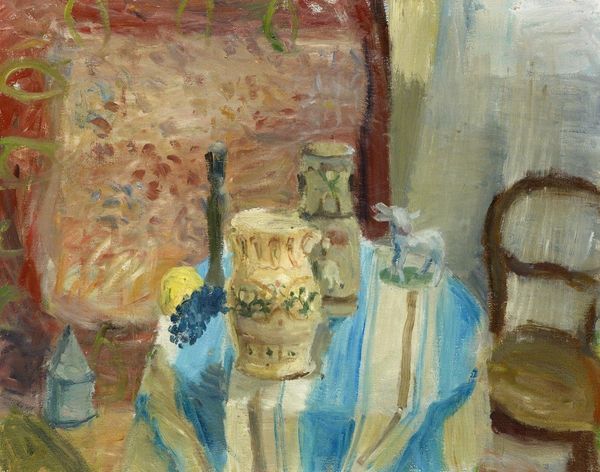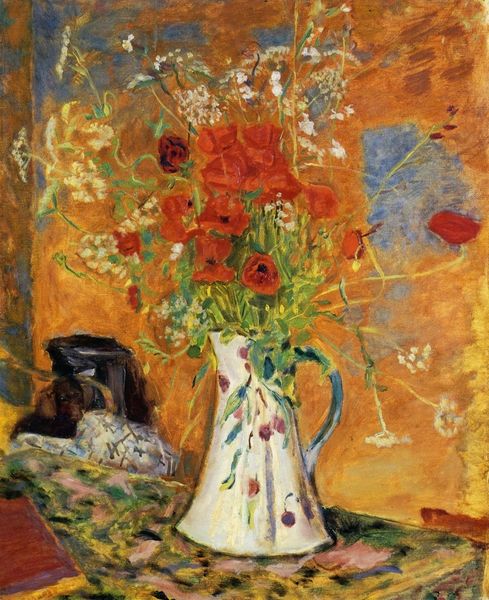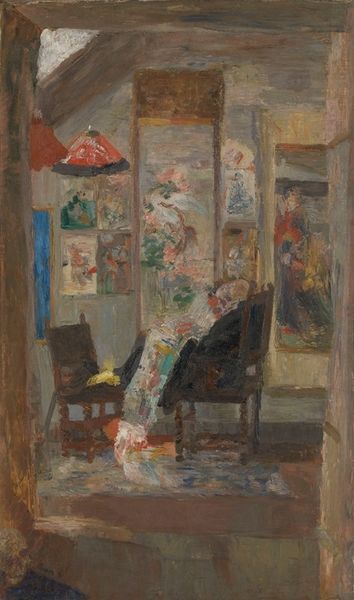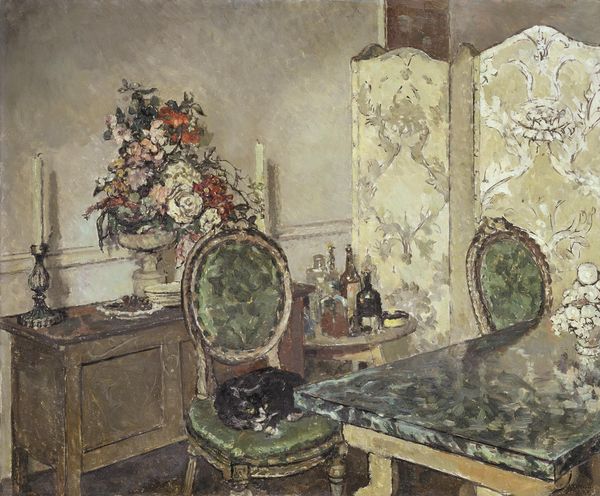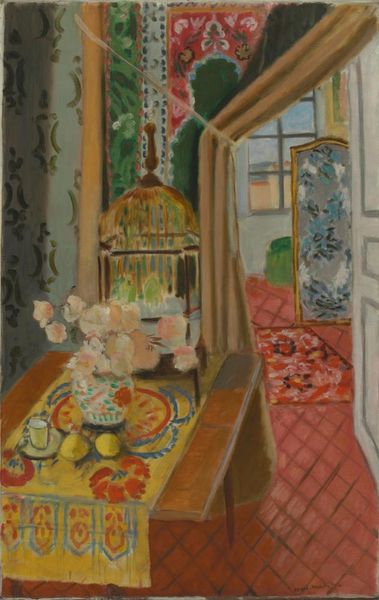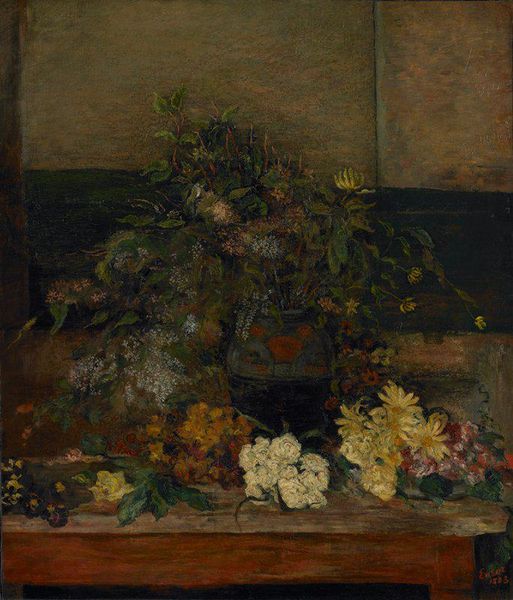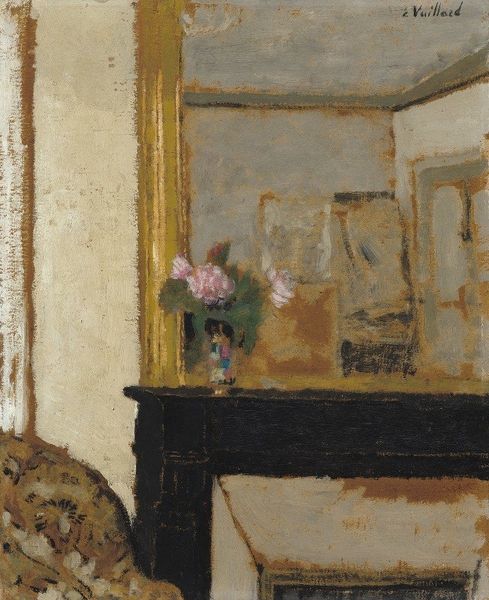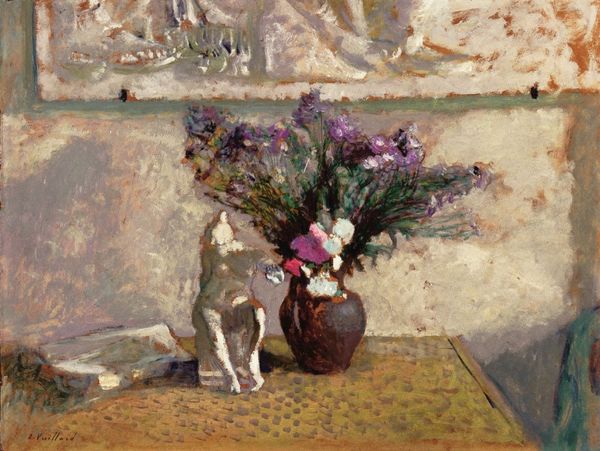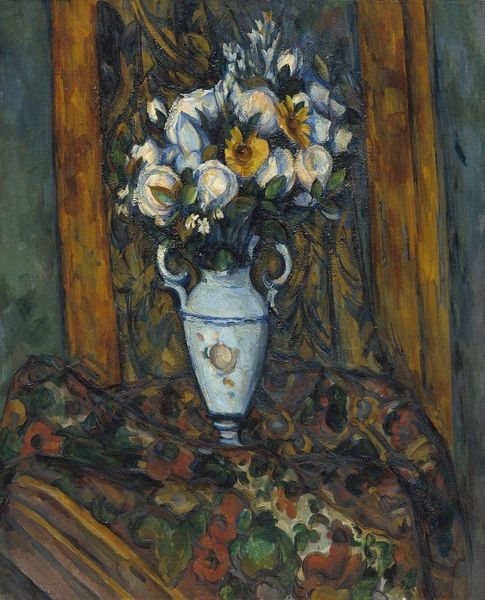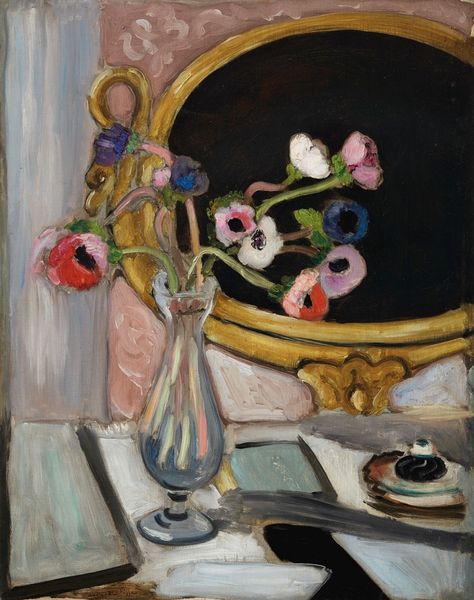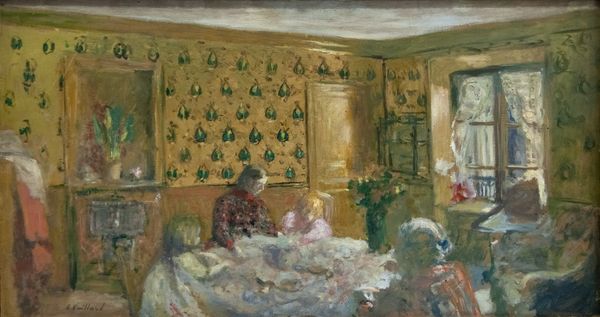
painting, oil-paint, impasto
#
still-life
#
painting
#
oil-paint
#
oil painting
#
impasto
#
intimism
#
plant
#
post-impressionism
Dimensions: 75 x 64.5 cm
Copyright: Public domain
Curator: Here we have Édouard Vuillard’s “Vase of Flowers,” painted in 1903. It’s currently held in a private collection. Editor: The impasto is remarkable—look how thick the paint is on the blooms. There's something so tactile about this painting. It invites touch. Curator: Absolutely. Vuillard was a key figure in the Intimist movement. What might appear like a simple still life reveals so much about the artist’s world. It almost feels like a glimpse into his private sphere. Editor: For me, the roughness of the application speaks to the physical act of creation. You can practically feel the artist manipulating the oil paint to bring the image into life. And the painting appears to show items used to make paintings. Is that easel in the background or partially stretched canvasses? Curator: Indeed, that unfinished canvas is almost like another character in the story, giving insight into Vuillard's daily artistic processes. The objects in this piece echo Vuillard’s connection to Post-Impressionism, a look at the world from an artist who took into consideration interior space and modern existence. Editor: Considering how much time and labor Vuillard invests in this particular work, it strikes me that this ‘still life’ also memorializes labor and time in a powerful way, reflecting Vuillard's commitment to his craft. Curator: Precisely. And don’t forget the art market's influence during this era. Works like these were incredibly popular among the bourgeois class, suggesting a certain kind of status symbol but also Vuillard’s critique of the era's social dynamics. Editor: Good point! It encourages one to meditate not only on material practices but also on the cultural consumption of painting as art. Curator: Viewing Vuillard’s "Vase of Flowers," is much more than considering just visuality. Editor: Absolutely—the artist beckons to ponder upon both production and cultural context within this beautiful still life.
Comments
No comments
Be the first to comment and join the conversation on the ultimate creative platform.
